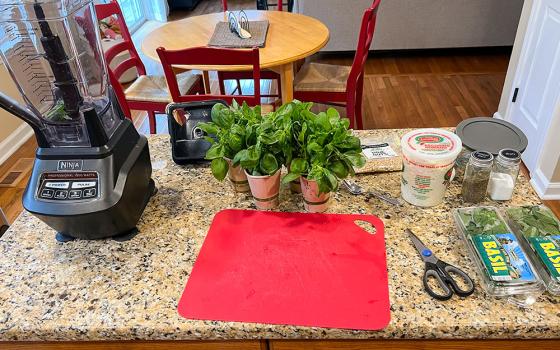Catholic health care facilities form the largest not-for-profit health service sector in the United States, caring for nearly one-sixth of all U.S. hospital patients each year.
The 620 Catholic hospitals across the country make up 12.4 percent of the nation’s 5,010 community hospitals.
They provide 15 percent of the hospital beds and in 2008 accounted for more than 5.6 million -- 15.8 percent -- of the 35.8 million patients admitted to those hospitals that year.
In addition to inpatient hospital stays, Catholic hospitals handled more than 98 million outpatient visits, 15.7 percent of the national total.
They employ about 540,000 full-time workers and 240,000 part-time workers.
| See the main story:Measuring quality of care |
There are more than 1,400 additional U.S. Catholic long-term and other health care facilities, with services ranging from adult assisted living residences and hospice care to outpatient clinics, home health care and skilled nursing.
When those facilities are counted, there is an active, institutional Catholic health care presence in all 50 states and the District of Columbia, including the six states -- Hawaii, New Mexico, North Carolina, Utah, Vermont and Wyoming -- that have no Catholic hospital.
Catholic hospitals handle more than 30 percent of all admissions in Alaska, Iowa, Oregon, South Dakota and Wisconsin. They handle between 20 and 30 percent of admissions in another 17 states, mainly across the Midwest and Northwest.
The Catholic Health Association, using data from the American Hospital Association, reported earlier this year that Catholic hospitals were ahead of other hospitals in a wide range of public health and specialty services traditionally considered “unprofitable.”
These included the percentage of Catholic hospitals offering alcohol and drug abuse treatment, birthing rooms, breast cancer screening, child and adolescent psychiatric services, child wellness programs, community outreach, crisis prevention, dental services, geriatric services, HIV/AIDS services, neonatal intensive care units, nutrition programs, obstetrics, pain management programs, and various social work services.
In these and several other areas, other not-for-profit hospitals lagged just slightly behind Catholic hospitals. Hospitals owned by state or local governments consistently came in third, and investor-owned for-profit hospitals came in fourth -- in many cases a distant fourth.
Breast cancer screening and mammogram services, for example, were offered by more than three-fourths of Catholic and other nonprofit hospitals, by two-thirds of government-owned facilities and by only two-fifths of the for-profits.
In three of the areas -- alcohol/drug abuse treatment, psychiatric services for children and adolescents, and teen outreach -- 20 percent or more of Catholic hospitals had programs, compared to 15-17 percent of other nonprofits, 10 percent or fewer of government-owned hospitals, and only 2-3 percent of the for-profit institutions.
Stories in this Health & Well-being series
Advertisement |

